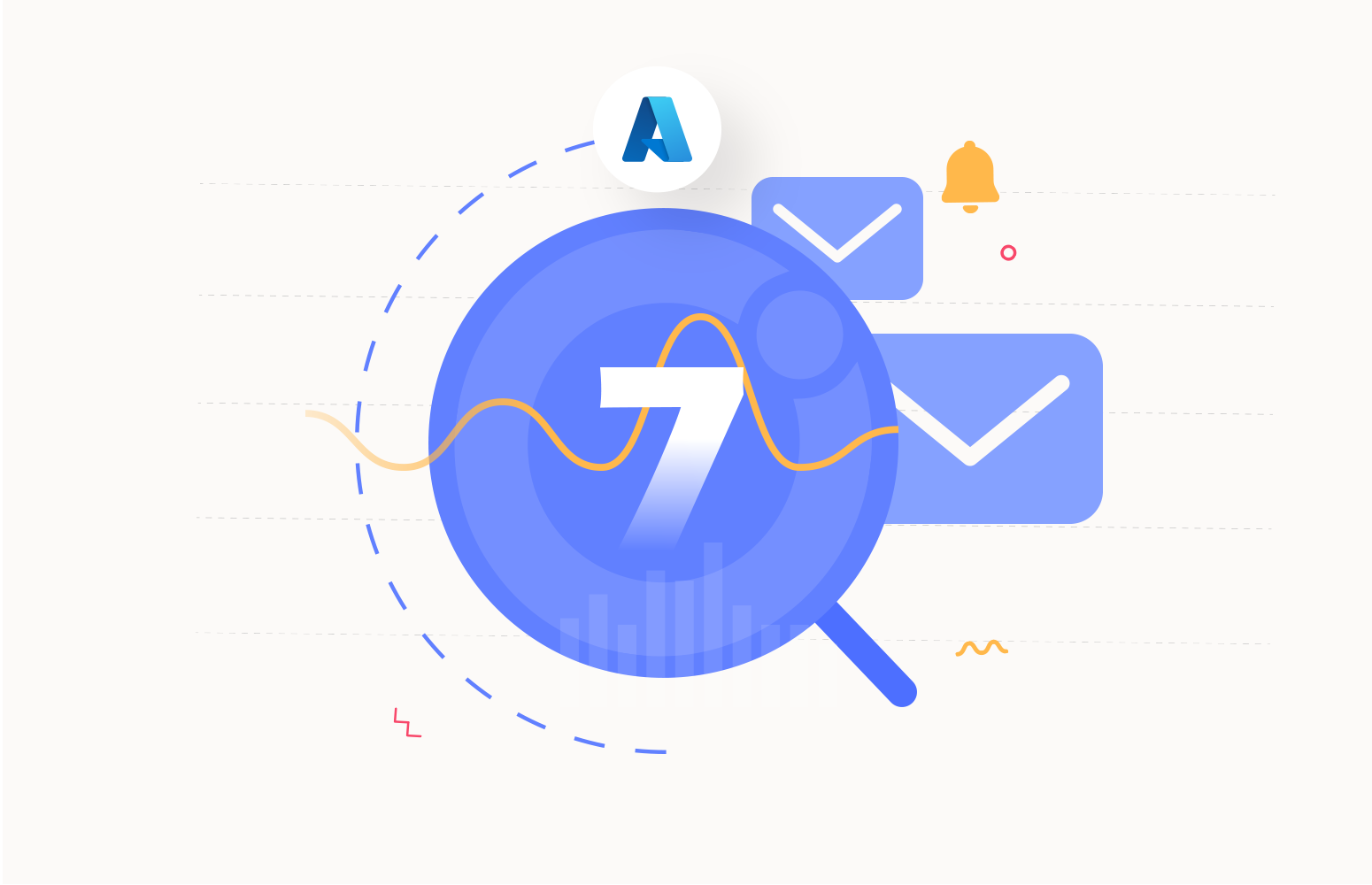Azure Database is a comprehensive cloud-based service Microsoft offers as part of its Azure cloud computing platform. It provides various database solutions to cater to different application needs, offering scalability, reliability, and performance. Here’s a quick look at Azure Database:
Database Types: Azure Database supports various databases, including SQL databases, NoSQL databases, and data warehousing solutions. This includes Azure SQL Database, Azure Cosmos DB, Azure Database for MySQL, Azure Database for PostgreSQL, and Azure Synapse Analytics.
Azure Database monitoring is crucial for optimizing performance, cost control, security, scalability, troubleshooting, capacity planning, compliance, user experience, and meeting service level agreements, making it your essential all-in-one tool for Azure environment management.
What is Azure Database Monitoring?
Azure database monitoring involves the observation, collection, and analysis of performance and operational data from databases hosted on the Microsoft Azure cloud platform. It provides real-time insights into database health, helping detect and address issues promptly. Overall, Azure database monitoring is essential for maintaining a robust and secure data environment in the cloud.
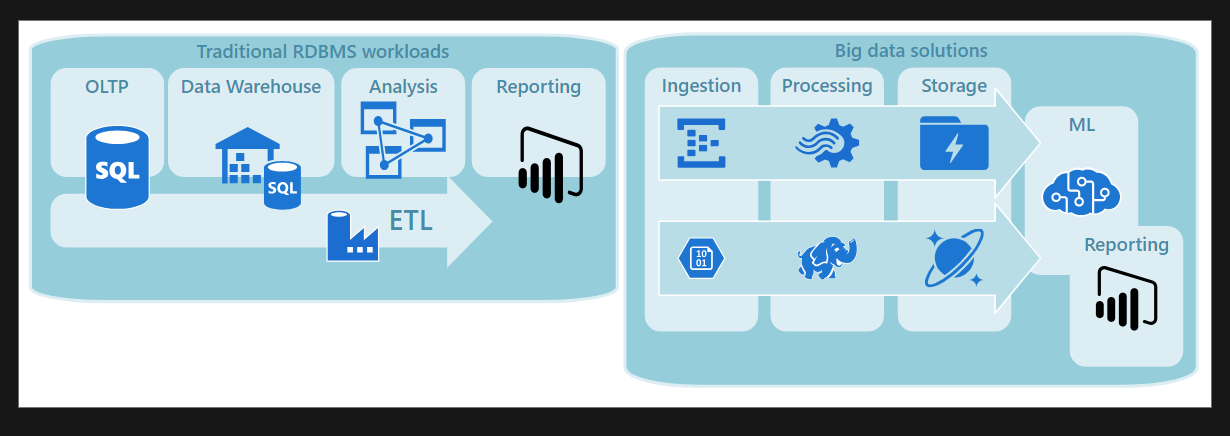
Azure Database solutions offer both traditional relational database management systems (RDBMS) for tasks like online transaction processing (OLTP) and online analytical processing (OLAP) and big data solutions. RDBMS can consolidate data from various sources into a data warehouse using extract, transform, and load (ETL) processes. Big data solutions handle extensive, complex, often non-relational data using NoSQL databases.
Benefits of Azure Database Monitoring
Azure performance monitoring
It tracks metrics like query response times, CPU and memory utilization, disk I/O, and more. This data helps you identify performance bottlenecks and optimize database queries for better efficiency.
Health monitoring
It continuously monitors the health of your databases, checking for issues like connectivity problems, resource contention, or database corruption.
Capacity planning
Azure database monitoring helps capacity planning by tracking resource utilization over time. It ensures that you allocate the correct number of resources to your databases, preventing overprovisioning or under-provisioning, which can lead to performance problems or unnecessary costs.
Security monitoring
Azure database monitoring can detect and alert you to suspicious activities or unauthorized access attempts, enhancing data protection and helping you take immediate action to secure your databases.
Alerting and notification
Monitoring tools in Azure can be configured to send alerts and notifications when specific thresholds or conditions are met. This lets you respond quickly to issues and anomalies, minimizing downtime and service disruptions.
Cost optimization
Monitoring can help you optimize costs by identifying underutilized resources and recommending adjustments. This can lead to significant savings in your cloud infrastructure expenses.
Azure offers various tools and services for database monitoring. These tools provide dashboards, alerts, and reporting capabilities to help you effectively manage and maintain your Azure-based databases.
How to monitor Azure SQL Database?
Monitoring Azure SQL Database can be done effectively using built-in Azure tools like Azure Monitor, Azure SQL Database Auditing, and Azure Log Analytics. These tools give you insights into your database’s health, query performance, and security.
To effectively monitor Azure SQL Database activity, database queries, and connections, you can adopt a comprehensive approach that combines Azure-native tools and features with third-party solutions. Here’s an expanded explanation of each step:
1. Azure SQL Database Auditing
Azure SQL Database Auditing is a built-in feature that allows you to track and log database activities. You can enable auditing to capture many events, including successful and failed logins, data changes, schema changes, and more. Auditing logs can be stored in various locations, such as Azure Storage and Azure Event Hubs, or streamed directly to Azure Monitor.
2. Azure SQL Database Threat Detection
Threat Detection is a security feature that helps you identify and respond to suspicious activities within your database.
3. Azure Monitor
Azure Monitor is a central monitoring service that collects telemetry data from various Azure resources, including the Azure SQL Database. You can configure diagnostic settings to stream telemetry data to destinations like Azure Log Analytics or Event Hubs.
4. Azure Log Analytics
Integrating Azure SQL Database with Azure Log Analytics allows you to store and analyze logs, queries, and connection data in a centralized location.
5. Azure SQL Database Query Store
Query Store is a valuable tool for capturing and analyzing query performance metrics. It keeps a history of query plans and execution statistics, helping you identify poorly performing queries and troubleshoot performance problems.
6. Azure SQL Database Metrics
Azure SQL Database exposes built-in metrics related to connections, resource utilization, and query performance within the Azure portal. You can configure alerts based on these metrics to receive notifications when specific conditions or thresholds are met.
Challenges of monitoring Azure Databases
Monitoring Azure databases is essential for security, performance, and data integrity, but it comes with challenges:
Security Challenges
Protecting sensitive data is paramount. This involves strict access control, continuous monitoring, encryption, rapid response to security threats, and concealing sensitive information to prevent accidental exposure.
System Performance Challenges
Efficient resource usage is essential for cost-effective and smooth system operation. Monitoring CPU and memory usage, optimizing slow queries, and ensuring scalable database performance are crucial.
Data Integrity Challenges
Maintaining data integrity is critical. Vigilance against data corruption, consistency in distributed databases, monitoring data restoration processes, and handling concurrency issues in multi-user environments are vital data management components.
How to monitor Azure Database using the Azure Monitor?
Azure encompasses a spectrum of database offerings, such as Azure SQL Database, Azure Cosmos DB, Azure Database for PostgreSQL, MySQL, and more. While each service offers a distinct set of monitoring and diagnostic tools, the fundamental procedure remains relatively consistent.
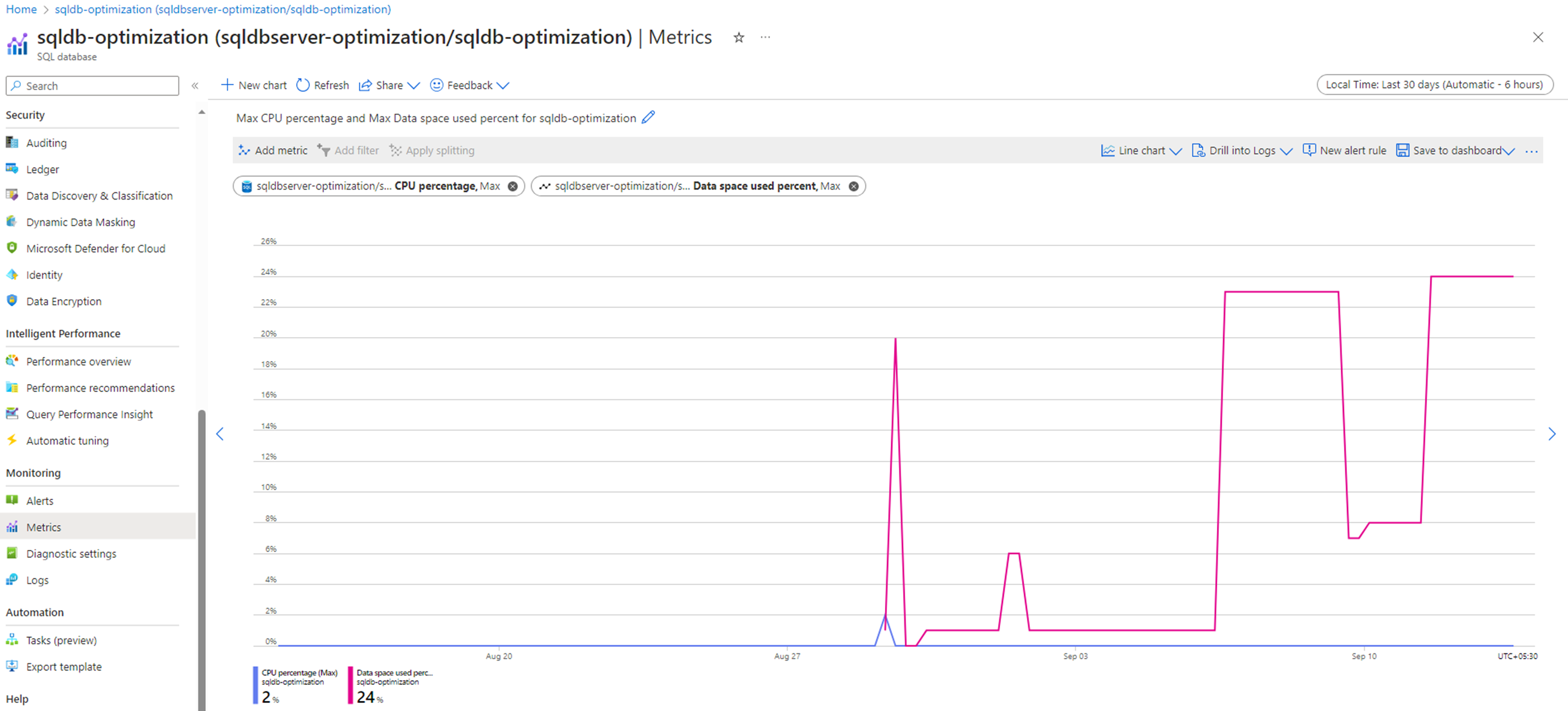
Alerting and Notifications
Azure Monitor empowers you to tailor alerts with precision for specific conditions or predefined thresholds. These alert rules are vital in promptly alerting you when specific events occur, or essential metrics exceed established limits. This proactive alerting system enables swift responses to issues, ultimately reducing the risk of downtime and disturbances.
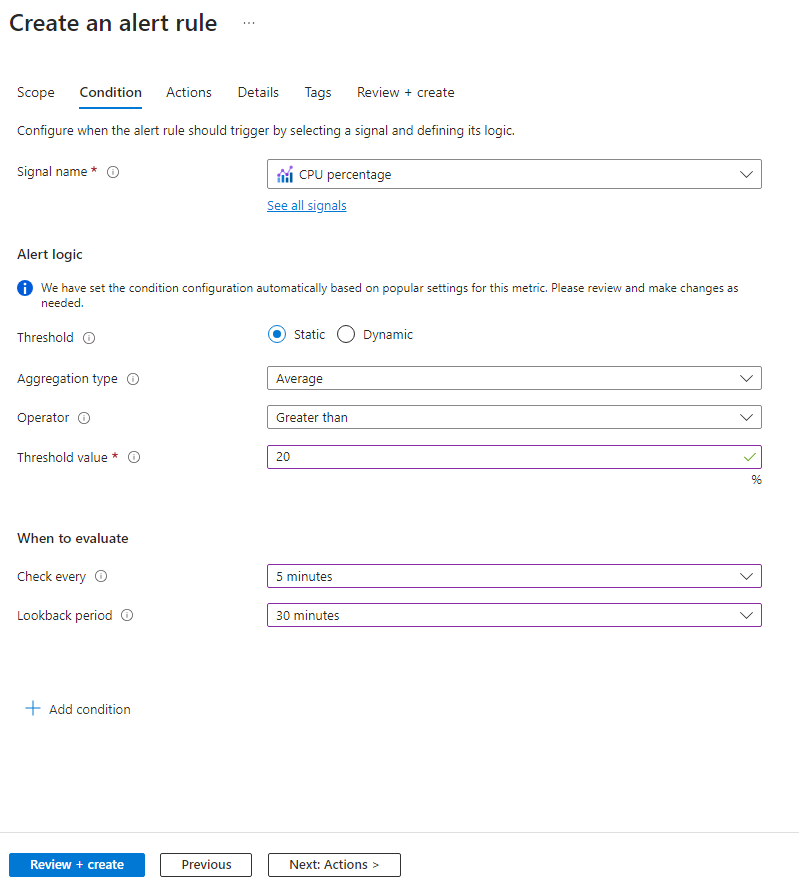
Dynamic Management Views (DMVs):
Monitoring Azure SQL Database performance with Dynamic Management Views (DMVs) is vital for maintaining a smoothly running database. DMVs are system views in SQL Server that provide insights into the database’s health. Customizing your DMV queries to focus on specific metrics, setting up scheduled monitoring to detect issues early, and configuring alerts using Azure Monitor are all essential steps. You can also leverage DMV insights to optimize queries and configurations.
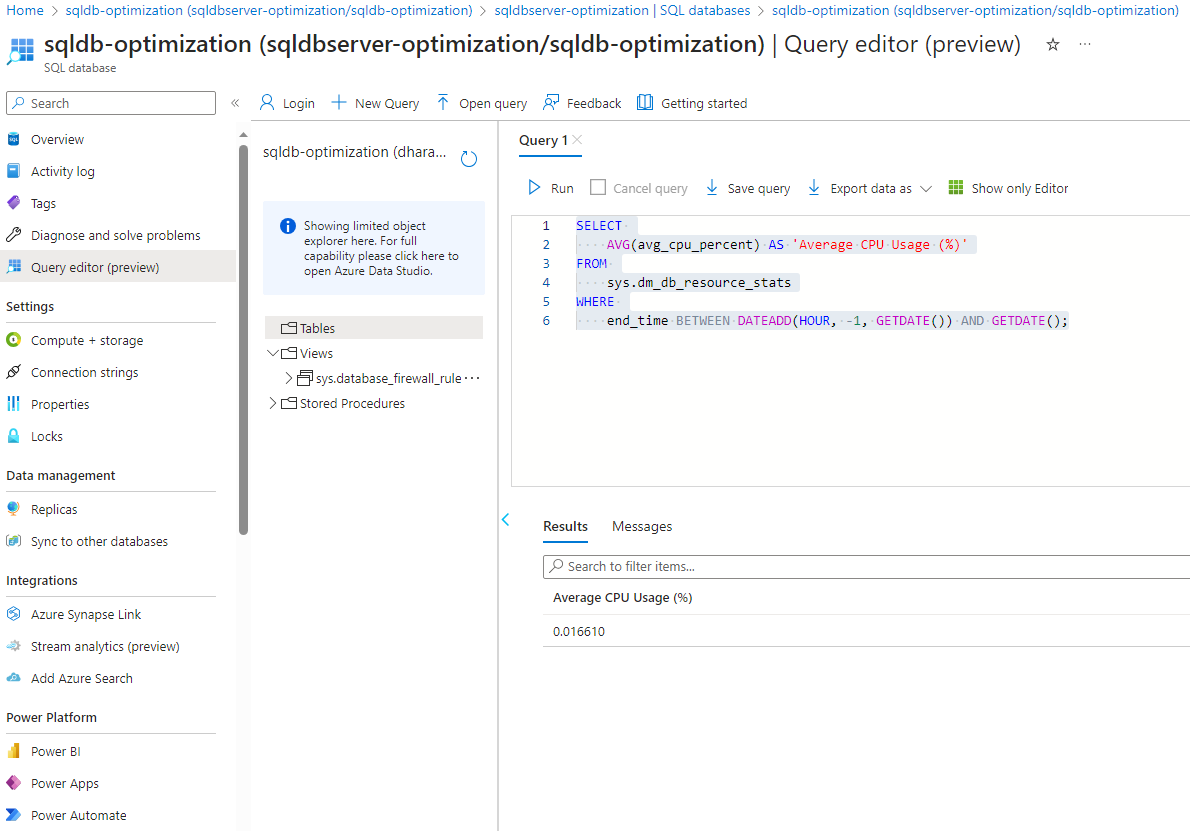
Using native tools in Azure Monitor has challenges like handling large data volumes is tough for comprehensive tracking, which can lead to extra costs. Configuring alerts can also be complex, requiring careful cost planning and management.
How to monitor Azure Database using Turbo360?
Azure SQL Database Monitoring Tool by Turbo360 helps users to consolidate resources across multiple subscriptions and resource groups into a unified platform called Business Application.
Metrics & Dashboards
While adding an Azure SQL Database to a Business Application, users access a pre-configured Dashboard that offers a comprehensive overview of the database’s key metrics. This Dashboard can be tailored to display real-time data, such as CPU usage percentage, DTU (Database Transaction Units) limits, and more, for the specific time frame of interest.
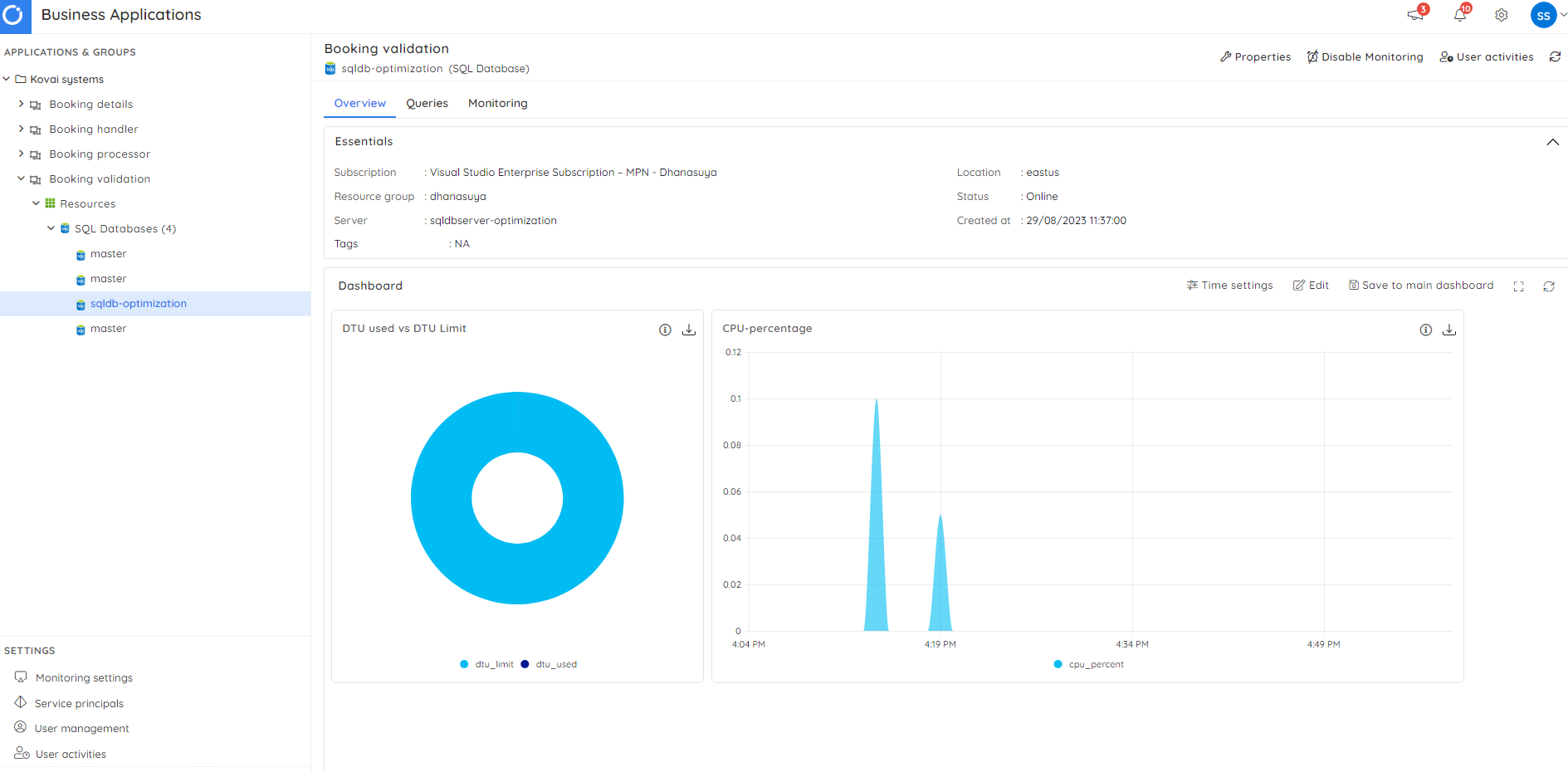
Execute SQL Queries
Turbo360 makes it easy for users to run SQL Queries without needing other database tools.
Imagine you’re in a typical work situation where you must check for errors in many different tables across databases on various servers. Traditional database tools force you to jump back and forth between servers, which takes a lot of time and can be frustrating.
This is where Turbo360 shines. If you have multiple SQL databases on different servers linked to a Business application, Turbo360 lets you run queries across all of them without switching between servers.
Turbo360 lets you save your most-used queries, so you don’t have to type them in every time. To run queries on SQL Databases, you only need to enter your Username and Password for authentication. This makes managing databases much more straightforward and efficient.

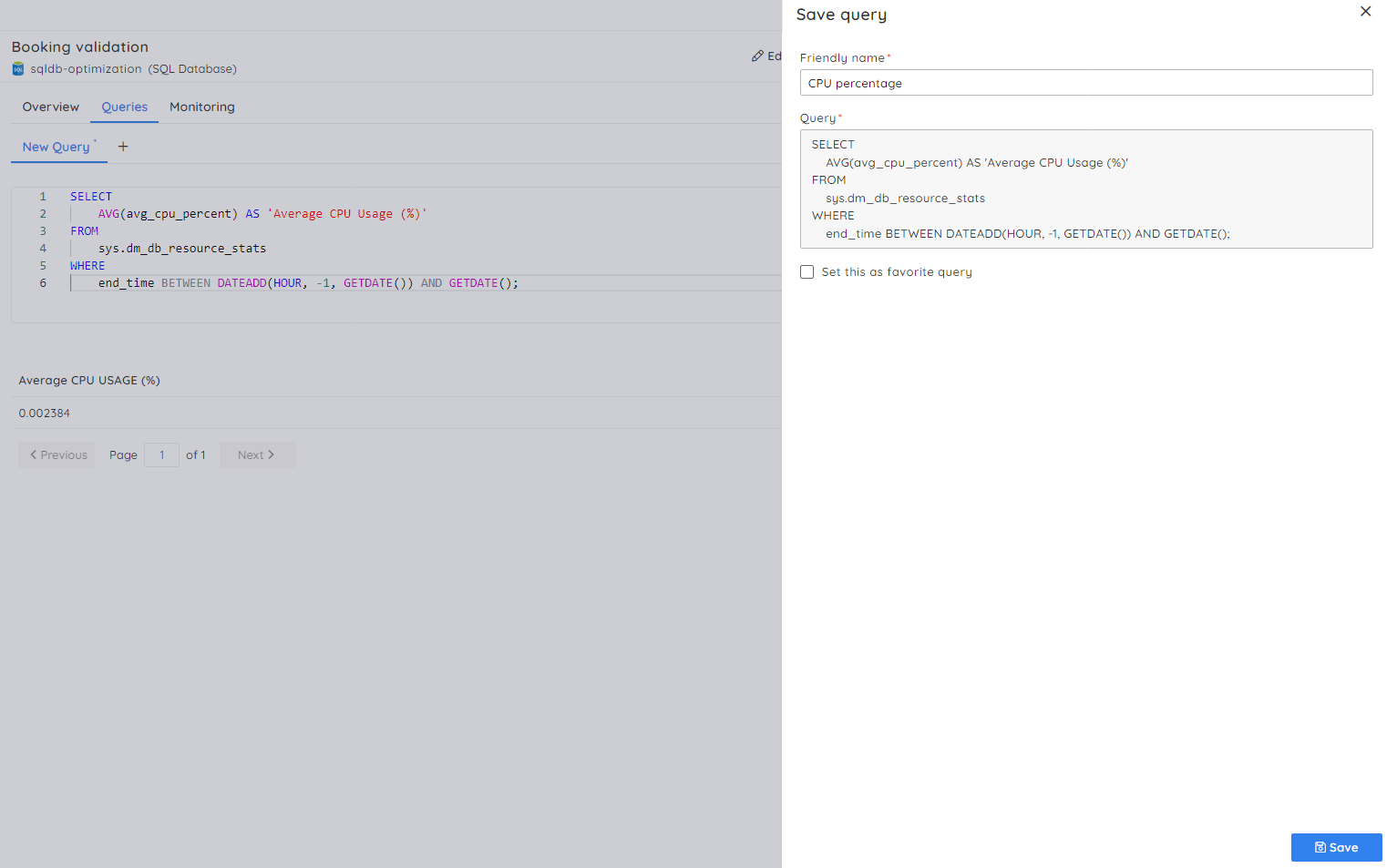
Metrics Monitoring
Monitoring Azure resources can be accomplished through two distinct approaches: the first involves individual monitoring, while the second entails the utilization of a monitor profile integrated within a business application. This monitor profile comprises a set of rules customized to address different categories of Azure resources. When a business application is configured with a profile containing rules for monitoring SQL database resources, Turbo360 manages the monitoring of all interconnected SQL database resources.

Let’s say a user decides to activate a rule for monitoring the CPU Percentage of the database. Whenever this CPU Percentage value breaches the monitor rule, Turbo360 promptly forwards notifications to all the designated channels, which may include well-known choices like Microsoft Teams, Slack, and PagerDuty.
Furthermore, there is the option to associate an automated task with the rule, guaranteeing that the automated task executes whenever a violation takes place.
Query monitoring
The associated queries can be monitored by configuring query rules in the Monitoring section. Users have the flexibility to specify threshold values based on their requirements.

Conclusion
When monitoring Azure SQL databases in a business environment, Turbo360 presents an extensive toolbox meticulously crafted for streamlined bulk monitoring and reporting, thus easing the workload for the Azure team.






